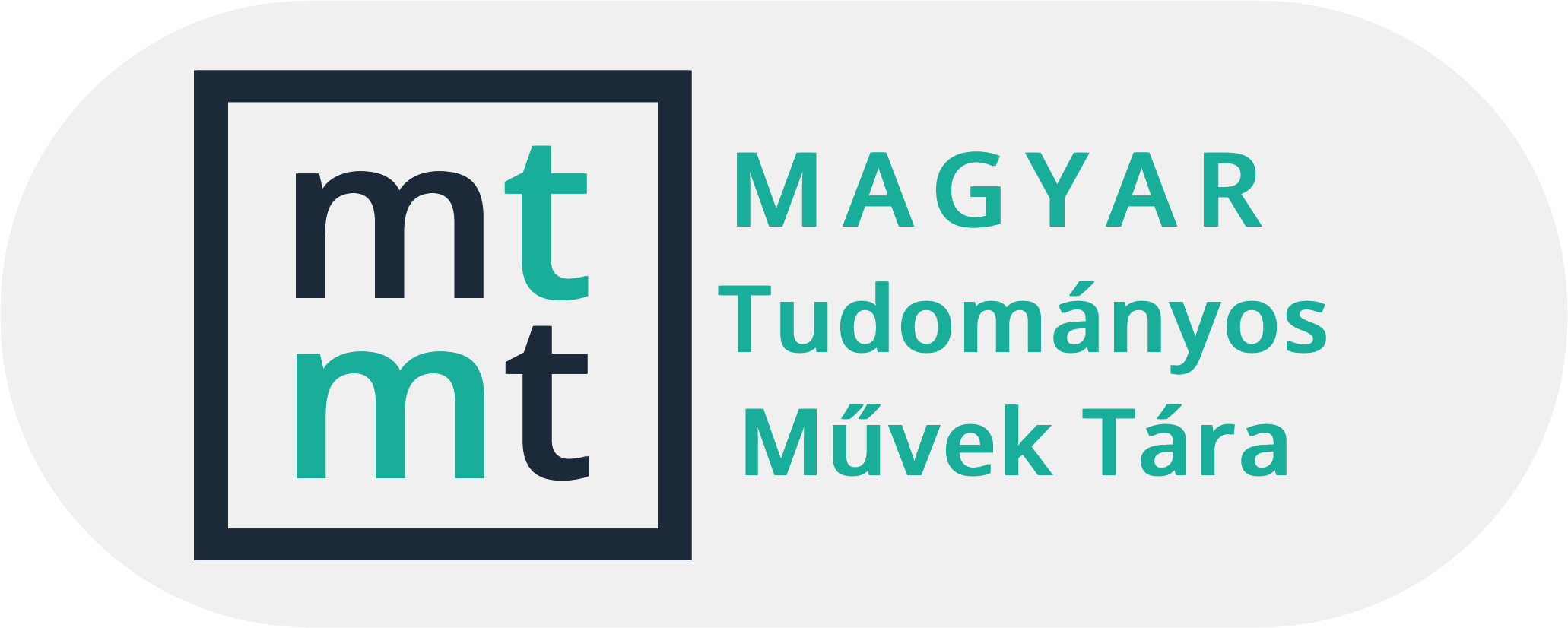Keresés
Keresési eredmények
-
A DEBRECENI AGRÁR-FELSŐOKTATÁS INTÉZMÉNYEK EGYKORI VEZETŐI (1868-1945)
79-88Megtekintések száma:116A debreceni agrár-felsőoktatás 2018-ban ünnepelte alapításának másfél évszázadát. A mögöttünk hagyott évtizedek során az ország mezőgazdaságának meghatározó szakképzési intézetévé vált. Az 1867. évi kiegyezés utáni korszak szülötte volt, amelyet a cívisváros gazdatársadalmának elképzeléseit váltotta valóra, összhangban az állam szerepvállalásával, mely utóbbi a központi hatalom feladatkörét bővítette. Mindez új színt kölcsönzött a magyar oktatáspolitikának, elősegítve a hazai mezőgazdaság modernizációjának a megindulását. E nevezetes évforduló ösztönözte korunk krónikásait, hogy áttekintést adjanak a másfél évszázad olyan tudós tanárairól, akik egyrészt iskolateremtők voltak, hosszabb időtartamig álltak az intézmény élén, valamint tevékenységük felölelte a magyar agrár-felsőoktatás minőségi színvonalának emelését. Ezt a célt szolgálják a Gerundium című egyetemtörténeti folyóiratban sorra kerülő írások.
-
Az amerikai felsőoktatásról, magyar szemmel
238-251Megtekintések száma:234Ma Magyarországon vajmi keveset tudunk az amerikai felsőoktatásról, annak történetéről és problémáiról. Ez nagymértékben a kommunista örökségnek tudható be, hiszen 1945/47 és 1989 között az amerikanisztika a „tűrt” es a „tiltott” közti szürke zónába szorult. Ezért az amerikai felsőoktatásról alkotott képünk túlzottan is támaszkodik a média torz tükrére (filmek, apokaliptikus tudósítások). Tanulmányunkban először ránézünk a számokra és a rendszer működésére (állami és magánegyetemek, tandíj, a sport szerepe stb.), áttekintjük a felsőfokú oktatás történetét és preferenciait a gyarmati kortól napjainkig, majd röviden felvázoljuk, hogy látták, mit is mondtak ugyanerről azok a magyar utazók, akik ezt 1945 előtt még szabadon megtehették. Ezt követően elemezzük a jelenleg folyó vitákat és azok politikai dimenzióit. Zárásként – személyes tapasztalatok alapján –értékeljük a jelenlegi helyzetet, és felvázoljuk a felsőoktatással kapcsolatos problémák szerepét a jelenlegi elnökválasztási kampányban.
-
A MAGYAR REKTORI KONFERENCIA TÖRTÉNETÉRŐL ÉS HELYZETÉRŐL – DEBRECENBŐL NÉZVE
143-163Megtekintések száma:147A Magyar Rektori Konferenciát felsőoktatásunk erősödő önszerveződése és érdekeinek hatékony képviselete jegyében hozta létre 1988-ban 19 egyetem rektora. Az MRK meghatározó szerepet vállalt és játszott felsőoktatásunk rendszerváltásában, autonómiájának, társadalmi szerepének erősítésében, az első felsőoktatási törvény előkészítésében, annak megvalósításában. Működésének kereteit, tevékenységének hatását és eredményességét a továbbiakban részben saját törekvései, részben a mindenkori kormányzat által biztosított vagy korlátozott keretek alakították. Az utóbbi időkben az MRK szerepe és súlya mind a radikálisan változtatott hazai, mind a mérvadó nemzetközi felsőoktatási térben erősen mérséklődött, jóllehet aktív szerepvállalása intézményeinknek, a tudománynak, társadalmunknak is fontos lenne: az egyetemek hangját mindenütt hallatni és hallani kell.
-
Klebelsberg Kunó kulturális politikája és a felsőoktatás
102 - 126Megtekintések száma:348The Cultural Policy of Kuno Klebelsberg and the Higher Education. The study presents the higher education policy of one of the best known and succesful Hungarian Minister of Religion and Education (1922–1931) Kuno Klebelsberg (1875–1932). As a politician of a state dismembered to one third of her original size-a consequence of the war loss and the Trianon peace treaty-he became a minister in miserable economic circumstances. With the contribution of him the stabilization of so-called refugee universities (from Kolozsvár and Pozsony to Budapest and then to Szeged [1921] and to Pécs [1923], the Academy of Minery and Forestry from Selmecbánya to Sopron [1918–1919]) could succesfuly be managed. Because of his conservative-liberal political attitude he tried to ease the effects of the so-called Numerus clausus Acts of 1920 which made the university entrance for Jewish Hungarians extremely serious. In 1928 he achieved the modification of that regulation. Instead of Budapest he supported the development of universities of Debrecen, Szeged and Pécs as a consequence of his well-grounded education policy based on decentralization. With his higher education policy he made great contribution to preserve the pre Great War Hungarian higher educational capacity in a dismembered Hungary lost 60% of her original population.
-
Az elitoktatástól a tömegoktatásig (felsőoktatás Franciaországban 1953–1990)
65-75Megtekintések száma:120From Elite Higher Educational Systems to Mass Education (Higher Education in France 1953– 990). The french university sytsem is unique in Europe. It is divided between public and private higher educational sectors. This paper aims to identify tensions and difficulties arised by the higher educational expansion in the french higher educational system.It focuses specifically on the increase in the number of the student and the trends of the expansion after the second world war up to 1990. The introduction of the Bologna system was followed by a large wave of national and foreign students willing to enroll French universities. The significant rise in the number of students led to manifold infrastructural problems. However, the transition from the elit to the mass education not only rised problems but also generated solutions. Seen in this light and based on the rate of enrollment and gender data this study intends to highlight techniques of problem solving in higher educational setting.
-
KÖZÖS EMLÉKEK DEBRECEN ÉS MAGYARÓVÁR AGRÁRFELSŐOKTATÁSÁNAK NAGY TANÁREGYÉNISÉGEIRŐL
229-243Megtekintések száma:148A hazai mezőgazdasági szakoktatás történetében 2018 két jelentős évfordulóval írta be magát a történelem aranykönyvébe. Mosonmagyaróvár születésének bicentenáriumát, Debrecen pedig fennállásának másfél évszázadát ünnepelte. A két felsőoktatási intézményt más-más szempontok hívták életre. Amíg Óvár magánkezdeményezésre nyitotta meg kapuit, addig Debrecenben a helyi gazdatársadalom volt a hajtóerő, amihez szorosan kötődött az anyanyelvi oktatás elfogadtatása a bécsi udvarral. Az idő később igazolta, hogy a magyar nyelvű oktatás egyik intézménynél sem ment a szakismeret rovására. El kell ismerni, hogy Magyaróvár adta a szakképzés terén az első nagy tanári kart, de Debrecen is hamarosan kinőtte magát a szakképzés fellegvárává. A Földművelésügyi Minisztérium tanárcserékkel oldotta meg az esetleges színvonalbeli eltéréseket. Ennek is köszönhető, hogy egyes tanáregyéniségek mind a két helyen lehetőséget kaptak oktatásra. Összeállításunkban – ízelítőként – kiválogattunk néhány jelentős, nagyformátumú személyiséget, akiket mind a két egyetemi kar „magáénak” vall.
-
A magyar mezőgazdasági szakoktatás története 1945-ig, különös tekintettel a debreceni agrár-felsőoktatásra
81-115Megtekintések száma:292The History of Hungarian Agricultural Vocational Education until 1945, with a special Emphasis on the Agricultural Higher Education of Debrecen. The study mainly provides an overview on the organizational history of educational institutions of the Hungarian agricultural vocational education. It gives a perspective on the development of different types of schools from the lowest level of education, through secondary education to the institutions of the highest level, outlining the economic and social-historical aspects, also with respect to the relevant legislation. A special attention is paid by the author to the history of the agricultural higher education of Debrecen until 1945.
-
AZ ÚJRAKEZDÉS KÖVETE: BENCSIK ISTVÁN (1953-1970) /DEBRECENI AGRÁRFELSŐOKTATÁS/ (1910-1998)
Megtekintések száma:371945-ben változás köszöntött be a hazai mezőgazdasági felsőoktatásban, amely a központosítás jegyében született meg. Megalakult a Magyar Mezőgazdaságtudományi Egyetem. Mindez később alapját jelentette a gödöllői Agrártudományi Egyetem színrelépésének. Átszervezések tarkították a képzés szerkezeti felépítését, helyszíneinek véglegesítését. A vidéki intézmények osztályokként működtek, majd a 49. évi rendelet megszüntette az általuk folytatott oktatást, így a központosított egyetem debreceni osztályát is, 1949. március 12-én. 1953-ban Bencsik István kapott megbízást a debreceni oktatás újra indítására. Közel két évtizedet töltött a cívisvárosban, vezető beosztásban az intézmény élén. Munkássága révén modernizálta, kibővítette az egykori – az 1940-ben átadott középfokú m. kir. mezőgazdasági tanintézetet – épületegyüttest. Nagyban hozzájárult ahhoz, hogy a város felsőfokú mezőgazdasági szakoktatása rövid idő alatt példaértékűvé vált az országban. Megteremtette az oktatás-kutatás tárgyi és szellemi hátterét. Sokat köszönhet Debrecen agrár felsőoktatása Bencsik Istvánnak, aki rangot vívott ki a város oktatás életében, egyúttal országos elismerést szerzett.
-
A társadalmi mobilitás lehetőségei a Horthy-korszak felsőoktatási rendszerében
47-71Megtekintések száma:198POSSIBILITIES OF SOCIAL MOBILITY IN THE HIGHER ADUCATION SYSTEM OF THE HORTY-ERA. he living circumstances of academic students were always determined by the prosperity of their parents. he income of parents in prestigous positions with higher qualiications provided for the education of their children, in an era when high expenses deined education as a privilege for a narrow social strata. By the beginning of the 20th century, the democratization of the higher education, the apperance of women and students from lower social strata at the universities had become an international tendency. he increasing number of students in Hungary was also due to the WWI. As students came from various social backgrounds, they received an opportunity to socially rise through education. he study aims at identifying the processes behind the social mobility of academic students between the two WWs.
-
Az egyetemi és akadémiai ifjúság politikai szerepvállalása 1830–1880 között
59 - 77Megtekintések száma:209The Political Involvement of the University- and Academic Youth between 1830 and 1880. The institutional network of the higher education in Hungary was very diverse on the turn of the 18th and 19th century and in the first part of the 19th century. In the multi-national and multi-confessional country, 88 institutions provided higher than medium level education. Most of these institutions were related to the historical denomination but besides them several state higher educational institutions existed. We reported about the student movements of these schools in this paper. In the first part of the 19th century the Holy Alliance’s system prohibited the foundation of student movements, although, in most of the institutions, reading circles and literature student associations were formed in which the leaders of the future national movements played an important role. The period of the revolution and the fight for freedom of 1848–1849 was significant regarding the student movements as well, because at most universities the studentry listed their requests aiming not only the reform of student life but the social changes as well. After the defeat of the freedom fight it was not possible to form student associations for ten years. But from the 1860s the battle for the national language of higher education marked the Hungarian youth movements. After the Austro- Hungarian Compromise, the studentry’s activity decreased, although they spoke in some political questions. For example, in 1867–1877, during the time of the Russian-Turkish war, the students in Pest and Cluj- Napoca stood against the Russians and not the Turks. This action produced that the university youth got back 36 valuable medieval codices from the Turks which were stolen in 1526 from the Royal Library in Buda.
-
Az eperjesi evangélikus kollégium tanárainak egyetemjárása a 19. század közepéig
177-189Megtekintések száma:76University Studies of Professors at the evangelical Colleg of Presov up to 19th century. Evangelical College in Presov, as one of the most important evangelical schools in Hungary, considered the high quality education of its teachers to be very important since its establishment, and as a rule, the positions of professors were occupied by the graduates of German universities. Before establishment of the College, the Town Council likewise had seen to it that the humanistic „gymnasium” had been lead by rectors with high quality university education. This paper aims at creating a portrait of studies of professors at Evangelical College in Presov, and at its predecessor – the Municipal Lutheran Gymnasium over a period of three centuries, from the half of the 16 th to the half of the 19 th centuries whereby the data about its rectors, conrecors and subrectors were used as a source. In the period of these three centuries 111 Presov Evangelical rectors, conrectors and subrectors acquired their education at 26 universities or colleges. Most of them, 34, studied at Wittenberg (30%), followed by Jena (11), Tübingen (7), Thorn (6), Halle (4), Vienna (4) and Frankfurt (4). Three of them graduated from the University in Altdorf, two in Greifswald and the Reformed College in Sarospatak and by one in Rostock, Prague, Gdansk, Graz, Strassburg, Helmstädt, Erfurt, Giessen, Erlangen, Rinteln, Paris, Vratislav, Dresden and Göttingen. Other 16 professors studied at unknown places, eventually did not obtained higher education. 20 professors obtained their education at more than one university or college, most of them (7) in the first period of existence of the College (1667–1711), and least of them (2) in the first half of the 19 th century.
-
WALLESHAUSEN 100 EMLÉKEZÉS A HAZAI AGRÁRKÉPZÉS KUTATÓJÁRA ÉS TUDÓS KÖNYVTÁROSÁRA, WALLESHAUSEN GYULÁRA (19232010), SZÜLETÉSÉNEK 100. ÉVFORDULÓJA ALKALMÁBÓL
Megtekintések száma:60Walleshausen Gyulára, egy olyan tudós kiválóságra emlékezünk születésének 100. évfordulója alkalmából, aki a magyar könyvtárügy, az 1945 utáni könyvtárosok első nagy nemzedékének kiemelkedő, elhivatott szaktekintélye, s e mellett a hazai agrárképzés-, az agrár-felsőoktatás-, a mezőgazdasági szakképzés története feltárásának egyik meghatározó kutatója. Könyvtárosi és történészi munkája során tisztelte, hozzáértő tudásával elemezte, tudományos igényességgel kötetekké formálta a múlt történeti értékeit, ezzel megőrizve és átörökítve az utókor számára. Könyvtárszakmai írásai, egyetemtörténeti munkái megkerülhetetlenek, fontos alapművek, ha valaki egy-egy általa művelt témakörben kutatást végez, vagy csak egyszerűen érdeklődik valamely könyvtári kérdés, intézmény vagy szak története iránt. Ezen írásunkban egész életútjára és munkásságára, de elsősorban agrártörténészi tevékenységére emlékezünk.
-
Az alá nem írt alapítólevél - A közgazdaságtudományi kar terve
102-110Megtekintések száma:131A budapesti közgazdaság-tudományi kar alapításának kalandos története a 19. század közepéig nyúlik vissza. Jelen írás a régi századfordulótól vázolja az eseményeket, amelyek elvezettek az egyetemalapításig.
1918-ban a kettős monarchia összeomlásának végnapjaiban csak egy aláírás választotta el a tervet a megvalósulástól. A tanulmány hosszabban tárgyalja ifj. Erődi-Harrach Béla Közgazdaságtudományi Egyetem
című írását, amely az 1918-as kísérletnek, valamint az 1920-as alapításnak is az alapját képezte. Ugyanakkor máig ismeretlen maradt a szakirodalomban. -
Az agrár-felsőoktatás történetéből (Hensch Árpádtól A Debreceni Üzemtani Iskoláig): A magyaróvári „Nagy Tanári Kar” egyik kiválósága Hensch Árpád 1847–1913
100-125Megtekintések száma:92FROM THE HISTORY OF AGRICULTURAL HIGHER EDUCATION. his paper connects the two periods and places of Hungarian agricultural higher education. he link is the scientiic work of Árpád Hensch – professor of Academy of Agricultural Sciences in Mosonmagyaróvár at the end of the 19th century – which has a signiicant efect on the Hungarian economic higher education even nowadays. his signiicance is proven by the eforts since the 1960s in Debrecen evolved on the Department of Business Economics in the former University of Agricultural Sciences.
-
The University in the 21st century: Teaching the New Enlightenment at the Dawn of the Digital Age. Ed. Marvin Lazerson
Megtekintések száma:167A kötet alapos elemzést ad arról – a téma részletes történeti és filozófiai hátterét is jól megvilágítva –, hogy a 21. század felsőoktatásának milyen fő irányvonalak, elvek és módszertan mentén kellene újjászerveződnie, hogy mely gyakorlatokat, szemléletet és módszereket kellene radikálisan újragondolni, illetve, hogy a szerzők meggyőződése szerint melyek azok a változások, amelyek nem csak alátámasztják, de már meg is követelik a radikálisan új szemléletmód alkalmazását a felsőoktatásban.
-
MOZAIKOK A MAGYAR FELSŐOKTATÁSI AKKREDITÁCIÓS BIZOTTSÁG 30 ÉVES TÖRTÉNETÉHEZ
87-137Megtekintések száma:173A MAB a magyar felsőoktatási intézmények és képzéseik minőségének külső értékelésére létrehozott szervezet. Ideiglenes jelleggel 1992 novemberében, törvényi meghatározással 1994-ben alakult meg. Jelen írás a MAB 30 éves történetének vázlatos krónikája. Csupán néhány, de talán nem jelentéktelen mozaikdarabkát kísérel meg nyújtani e 30 évre vonatkozóan, az alapítás előzményeitől kezdve a szervezet és működés egyes jellemzőin át a nemzetközi és hazai beágyazottságig, a MAB magyar felsőoktatásban elfoglalt helyének kérdéséig. A szöveg elsődleges rendező elve – az előzmények és megalakulás után – tematikus, a történeti szál az egyes témákon belül jelenik meg.
-
NAGY-AJTAI FEKETE LAJOS M. KIR. MINISZTERI TANÁCSOS, ERDŐAKADÉMIAI TANÁR, A M. KIR. BÁNYÁSZATI ÉS ERDÉSZETI AKADÉMIA IGAZGATÓJA 1837–1916
Megtekintések száma:48Fekete Lajos magyar királyi miniszteri erdőtanácsos, erdőakadémiai tanár az erdészeti felsőoktatás meghatározó alakja, aki a magyar tannyelvű oktatás, a magyar erdészeti szaknyelv megteremtésében elévülhetetlen eredményeket ért el. A selmecbányai M. Kir. Bányászati és Erdészeti Akadémián 1872–1891 között a Növénytan–Erdőtenyésztéstani tanszéket, 1891-től nyugdíjazásáig pedig az Erdőrendezéstani tanszéket vezette. Fontos szerepet játszott az akadémiai kampusz, az új oktatási épületek felépítésének szervezésében és a botanikus kertek fejlesztésében, berendezésében, továbbá az általa oktatott tárgykörökhöz (állattan, rovartan, növénytan, klíma- és talajtan) tartozó gyűjtemények összeállításában és fejlesztésében. A magyar erdészeti kísérletek az 1897/98-as évben indulhattak meg intézményes formában, s ez szintén Fekete Lajos nevéhez kötődik, ahogy a középfokú erdészeti képzés létrehozásának gondolata is. Ugyan már 1894-ben meghaladta a nyugdíjazás lehetséges korhatárát, de fáradhatatlan munkabírása továbbra is az akadémia kötelékében tartotta. Az akadémiai tanári kar bizalmát élvezve az 1892/93. tanévben aligazgatói, majd az 1897/98., 1898/1899. és 1899/1900. tanévekben igazgatói tisztet töltött be és ő volt az erdészeti szak vezetője is. 69 esztendős korában, 1906. október 1-jével, saját kérelmére – élete végére meggyengült látása miatt – nyugállományba helyezték, s ezzel az erdészeti akadémia legelső tanári karának utolsó szolgálatban lévő oktatója vált meg a katedrától. Ebből az alkalomból – szolgálatának elismeréséül – a miniszteri tanácsos címet is megkapta. Munkásságáért 1910-ben, hat évvel halála előtt érte a legnagyobb elismerés, a Magyar Tudományos Akadémia levelező tagjainak sorába fogadta. Nincs az erdészeti tudományoknak egyetlen olyan ága sem, amelyben tevékenysége ne hagyott volna maradandó nyomot. E rendkívül termékeny, szerteágazó és minden területen kimagasló teljesítményt produkáló életpálya ellenére az utókor meglehetősen mostohán bánt és bánik ma is Fekete Lajossal, akinek munkássága, emberi magatartása valamennyiünk előtt példaként állhat.
-
Egy FELEDÉSBE MERÜLT NÉVFELVÉTELI SZÁNDÉK
164-168Megtekintések száma:127A magyar pedagógia történetében jelentős évszám 1959, hiszen abban az évben indult el a felsőfokú tanítóképzés. Az a tizenegy felsőfokú tanítóképző intézet, amelyben a magasabb fokra emelt képzés helyet kapott, „névtelen” intézményként kezdte meg a működését, egyik intézmény nevébe sem került be a magyar kultúrtörténet valamelyik kiemelkedő alakjának a neve. Ezt a hiányt már az első tanév folyamán, 1959/60-ban pótolni kívánta a minisztérium, így az egyik igazgatói értekezleten tanácskoztak az egyes intézmények lehetséges névadóiról. 1960 elején a minisztérium Tanítóképzős Osztálya a korábbi egyeztetésre hivatkozva arra kérte az igazgatókat, hogy fogalmazzák meg röviden a névválasztás indoklását. A nyíregyházi Felsőfokú Tanítóképző Intézet Eötvös Józsefet, a magyar népoktatásügy legnagyobb jótevőjét, a tanítóképzés fejlesztésének elhivatott támogatóját választotta névadóul. Alábbi írásunkban a minisztérium felhívását és a nyíregyházi tanítóképző igazgatójának válaszlevelét közöljük. Igaz, a névfelvétel ügye végül 1960-ban elakadt, mégis úgy gondoljuk, ez a be nem teljesült szándék is megmutat valamennyit abból, milyen hagyományok letéteményesének és milyen örökség utódainak érezték magukat az akkori nyíregyházi felsőfokú tanítóképző vezetői.
-
Eperjes - Az evangélikus jogakadémia 1918/19-es tanéve és Miskolcra költözése
80-89Megtekintések száma:174Az eperjesi jogi akadémiát 1862-ben alapították újjá, és az iskola ezzel a felvidéki családok fontos képzőhelyévé vált. Az I. világháború során az oktatást sokszor megzavarták az elszállásolt katonák, és nehézséget
okozott a harcoló oktatók helyettesítése. A háború után, de még Trianon előtt szóba került az iskola Miskolcra telepítése. Eperjes csehszlovák megszállása után (1918 decembere) és a jogi képzés betiltása után az iskolát
márciusban Miskolcra költöztették, ahol az ősszel megkezdődhetett az oktatás. -
A BUDAI JEZSUITA AKADÉMIA HALLGATÓSÁGA (1713-1777)
182-195Megtekintések száma:62A tanulmány a Budai Jezsuita Akadémia (1713-1777), a Pesti Piarista Bölcsészeti Líceum (1752-1784) és a rövid ideig fennálló Pesti Jogi Szakiskola (1756-1771) forrásait, történetét, hallgatóit, oktatási színvonalát és látogatottságát mutatja be. Ezek olyan eddig alig ismert, 1777 előtti, budai és pesti felsőoktatási intézmények, amelyek megalapozták a főváros területén a későbbi felsőoktatás felvirágzását.
-
Dr. krassai lovag Kerpely Kálmán (1864–1940) – A magyar növénytermesztés modernizációjának úttörője
28-43Megtekintések száma:79DR. KRASSAI LOVAG KERPELY KÁLMÁN (1864–1940) PIONEER OF THE MODERNISATION OF HUNGARIAN CROP PRODUCTION. Agriculture in Hungary – more speciically crop production – dates back to the Roman 17th century. Hungarian agriculture is rooted in Western European agriculture. Its development was started in the Age of Enlightenment, during which the conditions of the modernisation of agriculture were established in the Carpathian basin in the 18th–19th century. Social transformation, the reorganisation of possessions and the establishment of the system of agricultural higher education made it possible to modernise the agricultural sector. In the 1800s, agricultural higher education institutes were esablished in Keszthely and
Magyaróvár under modest circumstances. In 1867, a state-run institution was established in Debrecen where education and research were launched with well prepared teachers who had international knowledge. At the end of the century, Kerpely Kálmán started to work in Debrecen and crop production research was launched with the central topic of analysing the harmonious correlations of the nutrient and water supply of the produced crops. he hundred-year-old results and establishments of this research direction provide a basis for the development activity of subsequent years and the research of its basic correlations. hese scientiic activities are still timely today. -
Javaslat a trimesztriális rendszer bevezetésére – A debreceni jog- és államtudományi kar felterjesztésé gróf Zichy János vallás- és közoktatásügyi miniszterhez (1918. augusztus 1.)
95 - 105Megtekintések száma:196Proposal for the Introduction of the Trimester System – Proposal by Faculty of Law of the University of Debrecen to Earl János Zichy, Minister of Religion and Public Education. The Faculty of Law of the University of Debrecen in the last period of the World War I. made a proposal in order to divide the school year to three semester. It was a strange source of the history of the Hungarian higher education. Based on this document can be cognizable the real life and thinking of the students of the university who came back from the war and of the professors who met with them the first time. The trimestrial system of the higher education was favoured by the students too, but it wasn’t able to come to real because the collapse of the Monarchy.
-
Péter H. Mária: Gyógyszerészképzés a Ferenc József Tudományegyetemen 1872-1919 között
215-218Megtekintések száma:139Kolozsvár felsőszintű oktatásban való részvétele már a XVIII. században megindult. Mária Terézia átfogó egészségügyi rendeletének végrehajtása csak megfelelő számú szakember által vált megvalósíthatóvá, ezért oktatáspolitikája is erőteljes változást, fejlődést kívánt. A nagyszombati magyar egyetem orvosi karának létrehozása (1769) volt az első lépés ez irányba, de hamarosan felmerült egy második magyar egyetem alapításának gondolata, szükségessége.
-
A KÉTÉVES LEVÉLTÁROSKÉPZÉS MEGSZERVEZÉSE 1958–1960 KÖZÖTT
122-133Megtekintések száma:68A megnövekedett levéltári és iratkezelési feladatok miatt a felsőfokú levéltárosoktatásra égető szükség mutatkozott a 20. század második felében. Az első kezdeményezést követően, az 1950 és 1955 között működő egyetemi levéltárosképzés megszűnése után, a levéltári területet irányító minisztérium által szervezett kétéves tanfolyam a hiányt csak részben pótolta be, a kidolgozatlanság és a számonkérés hiányai miatt csak részsikernek értékelhetjük. Értékének tekinthető, hogy célirányos tudásanyagot igyekezett átadni, olyan résztvevőknek, akik eleve levéltárban dolgoztak, így nem „elit” történészképzésnek tekintették a képzést. A tanfolyam hibáinak kijavítása az időközben újra megindult egyetemi levéltárszak miatt elmaradt.
-
Az 1944. április 11–12-én a Vallás- és Közoktatásügyi Minisztériumban tartott rendkívüli értekezlet debreceni emlékeztetője
115-119Megtekintések száma:96The Debrecen Memo of an Extrordinary Meeting Convened at the Ministry of Religion and Public Education on April 11–12, 1944. In March, 1944, the German military occupation of Hungary plunged the country into a difficult situation, affecting among other things the Ministry of Religion and Public Education responsible for the institutions of higher education. Minister Jenő Szinyei Merse convened a twoday meeting for April 11 and 12, for the purposes of analysing the situation that evolved and for making
the required decisions. The source material registers the proceedings of this meeting. President János Bognár of Debrecen’s István Tisza University probably had the text copied immediately after he had returned from the capital. The memo consists of twenty-five long and short items and these are about taking sundry measures, mainly pertaining to the simplification of administration for the purposes of an early closure of the academic year and a more severe interpretation of the Jewish laws.






